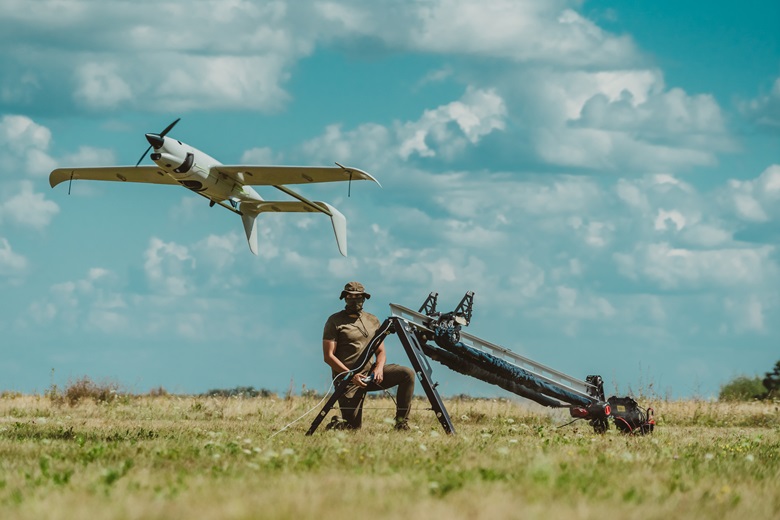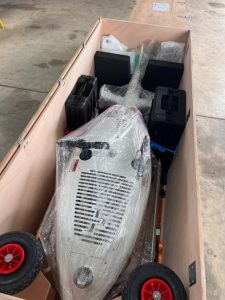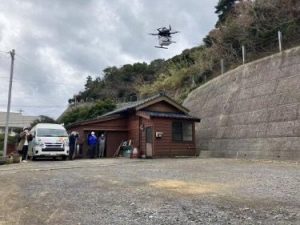Skyeton’s Raybird sUAS: A Vital Resource for Contemporary Reconnaissance and Surveillance
March 28, 2025
Skyeton Raybird sUAS boasts an impressive flight endurance of up to 28 hours and an operational range of 2,500 kilometers, establishing it as a crucial asset for modern reconnaissance and surveillance missions.
Based in Ukraine, Skyeton has 19 years of expertise in manufacturing unmanned aircraft systems (UAS). The company produces and delivers aerial systems dedicated to reconnaissance and surveillance, deployed across the globe, and has a professional workforce exceeding 300 individuals.
Skyeton’s drones are integral to the operations of Ukraine’s Defense Forces, offering vital intelligence from deep inside enemy territory. The Raybird sUAS set a Ukrainian record for UAV flight duration by achieving 24 hours of continuous flight back in 2019. Since 2018, it has been officially adopted by the Armed Forces of Ukraine, designated as ACS-3.
The company’s beginnings trace back to the production of ultralight aircraft, specifically the K-10 Swift, which laid the groundwork for high standards in aviation manufacturing. The innovative solutions crafted by Skyeton have applications in in-depth reconnaissance, strategic intelligence gathering during warfare, border surveillance, natural disaster monitoring, fire management, engineering systems, and 3D mapping. To date, Skyeton has manufactured over 1,000 aviation systems, with the Raybird sUAS contributing more than 350,000 flight hours in combat missions. The firm also operates an in-house R&D center where more than 100 engineers are employed.
Technical Specifications of Raybird sUAS
The Raybird features a wingspan of 3 to 4.2 meters and a Maximum Takeoff Weight (MTOW) of 23 kilograms. It can achieve a flight range exceeding 2,500 meters and a maximum altitude of 5,500 meters. The drone’s data link range extends up to 225 kilometers, and it can carry payloads between 5 to 10 kilograms, which may include a gyro-stabilized multi-sensor gimbal camera, radar systems, special sensors, and aerial imaging equipment.
With a cruising speed of 110 km/h and a speed range of 80-140 km/h, the Raybird employs an Electronic Fuel Injection (EFI) system that optimizes fuel delivery to an efficient four-stroke gasoline engine. The use of 95 Octane fuel facilitates smooth engine performance by resisting early ignition.
The operational temperature range of the Raybird is between -35°C and +55°C, and the system can be deployed within 25 minutes. It utilizes a mechanical catapult for takeoff and parachute landing on airbags for recovery.
Executing Extended Missions with Minimal Interference
The design process behind achieving a flight endurance of up to 28 hours and a range of 2,500 kilometers incorporates efficient design, fuel management, and cutting-edge technology, which the Raybird amalgamates via numerous fundamental aspects.
The drone’s fixed-wing design paired with a fuel-injected gasoline engine offers significantly higher efficiency compared to battery-powered counterparts, facilitating extended missions without frequent refuels. The four-meter wingspan coupled with streamlined aerodynamics minimizes drag, promoting fuel efficiency and enabling operation at high altitudes.
Advanced communication and navigation systems within the Raybird maintain stable control over vast distances, enabling real-time data transmission up to 225 kilometers. Additionally, it can operate at altitudes of 4-5 kilometers, evading many air defense systems while optimal flight conditions are sustained.
Another pivotal feature is its autonomous flight system, allowing the Raybird to adhere to pre-programmed flight paths and adjust in real-time based on evolving conditions, thereby minimizing unnecessary energy expenditure and improving mission efficacy.
Through the integration of fuel efficiency, aerodynamic design, expansive communication capabilities, and autonomous functionality, the Raybird sUAS proves to be an indispensable tool suited for contemporary reconnaissance and surveillance operations.













